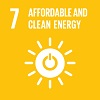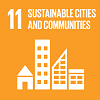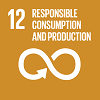Kit pour Vélo H2 – FAQ
Hydrogen
Why hydrogen ?
Because of the need of storage for renewable energy, hydrogen is on the way to becoming a popular means of storing energy in large quantities. This hydrogen is available either for back-conversion into electricity or for direct use as in hydrogen cars or, as in this case, to power a bicycle. With our kit for converting a traditional bicycle into a hydrogen-powered electric bicycle, we want to bring hydrogen to broad public. We want to make it common, we want to get used to its use with an application that is affordable and available to everyone.
Hydrogen, ist it really clean ?
Hydrogen is clean provided it is produced from renewable resources with appropriate technologies. This is the case of hydrogen produced by electrolysis with green electricity. So it is the consumer's choice.
Isn't it dangerous ?
Hydrogen is no more dangerous than gasoline or natural gas. The charateristics of combustion and therefore of a possible explosion of these fuels are different. Hydrogen is the lightest of all these molecules and the impact of an improbable explosion is less important. With modern handling and storage equipment, the risk of a leak or explosion is very low.
Whate are the advantages in comparison to electricity ?
First of all, in hydrogen we store more energy than in electricity. So the autonomy of a vehicle, car or bicycle or bus, is considerably increased.
Conversion kit
Why a kit ?
Existing hydrogen bikes have a high level of component integration. They are expensive not only because of the cost of the components, but also because of the cost of their manufacture and the amortisation of the development. With an open source kit, the user only has the costs of purchasing the hardware. With the conversion kit turning a traditional bike into a hydrogen-powered electric bike, the H2 bicycle becomes much cheaper and therefore affordable.
Why open source ?
We are Pangloss volunteers, philanthropists, who take pleasure in developing something useful. Our hope is to get feedback on ideas to improve the system. But our biggest interest is to get as many users as possible enthusiastic about the system so that suppliers can commit to making better and cheaper components.
Is there any competition ?
They have seen hydrogen-powered bicycles for about 20 years. They were prototypes or small series reserved for industrial users and public organizations. With the kit, we open the door for the private individual.
Where can I refill my bicycle ?
Hydrogen supply is a concern. There are recharging stations for example by Ataway in Chambery, or the hydrogen cartridge distribution system from Aaqius in Paris and Geneva. With the proposed kit we give them the motivation to create a regional charging network. If not, there is the possibility to install a small electrolyser at home. This is a relatively expensive, but available solution.
Economy
What will be the price of the kit ?
Today we buy components for the kit, electric motor, fuel cell, hydrogen storage, microcontroller, tubes, fittings and cables for about six to seven thousand euro. The projected price of the components, scaling with increasing production numbers, allow us to speak about a price for the kit in the order of 1000 euro.
How much costs a recharge ?
On a bicycle you typically store 50 grams of hydrogen. This is 60% more energy than stored on an electric bicycle. Based on the price of one kilogram of hydrogen of ten euro, as for hydrogen cars, the cost of recharging is half a euro.
A propos
Why all this ?
We want to encourage the use of green hydrogen by private individuals, and thus promote renewable energies. We want to create, in the Pays de Gex and the Lake Geneva Basin, a first centre of competence around hydrogen as a complement to green electricity. We want to contribute to the development of soft mobility in the Greater Geneva area, particularly in an area that is heavily impacted by relatively short border commuters' journeys.
Why us ?
As technical people - Harald and Klaus are physicists, Olivier is an engineer - we are naturally interested in new technologies. Our concern for the climate, the environment and the sustainability of our social system has led us to think about renewable energy applications and hydrogen. At Pangloss Labs we have found a favourable environment and an atmosphere nourishing our ideas.
What is donators' money used for ?
In order to buy components and build the hydrogen bicycle, we need a budget of about 15 thousand euros. Hydrogen-related components, fuel cell, hydrogen container, bottle with refill system, tools and accessories will consume 85 percent of these funds. We have included a small amount for travel for meetings with potential partners. The rest is used for consumables and contingencies.
Who takes care ?
Making the hydrogen bicycle is a Pangloss Labs project. It is, therefore, supported by the association. The project has already received funds to buy an electric motor, which has been installed on the bicycle that was donate by one of the members of the association. At Pangloss there is furthermore the possibility of rent workshop space in the FabLab. The project is lead by Klaus Röhrich, Harald Wirth and Olivier Eugene.




